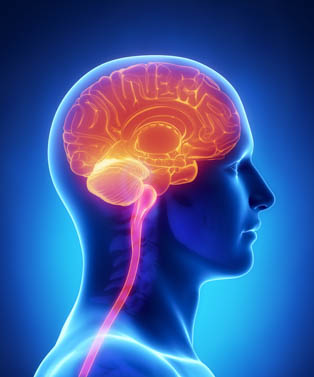Georgetown University Medical Center and University of Hong Kong researchers find acupuncture effective for the treatment of chronic stress. In a unique laboratory investigation, researchers discovered that electroacupuncture at acupuncture point ST36 "prevents the stress-induced increases in HPA hormones, and has potentially long lasting effects." ST36 (Zusanli) is a yangming channel point shown to affect ACTH and CORT centrally to reduce depression. In addition, behavioral tests show electroacupuncture is an effective modality in eliminating "depressive and anxious behavior."
The researchers note that the use of electroacupuncture (EA) "may provide utility in management of clinical chronic stress-related disorders, with minimal side effects." Electroacupuncture at ST36 on laboratory rats was found significantly more effective than sham controls "in reducing depression-like behavior." Both latency to immobility and duration of immobility due to stress were significantly reduced in the electroacupuncture group versus the sham control group. In addition, electroacupuncture at ST36 effectively prevents increases in stress related hormones versus the sham control group.
The researchers tested the effective biological mechanisms of electroacupuncture at ST36 by implementing a glucocorticoid blockade using RU-486, a synthetic anti-progesterone and antiglucocorticoid drug often employed as an abortifacient. The testing reveals that electroacupuncture at ST36 is likely to act through the central regulation of CRH (corticotropin-releasing hormone) and not directly through cortisol (CORT) and adrenocorticotropic hormone (ACTH) feedback. ACTH is produced in the pituitary gland in response to CRH, which is released by the hypothalamus.

The researchers discovered that electroacupuncture prevents elevations of the HPA (hypothalamus-pituitary-adrenal axis) hormones "minutes after exposure to painful cold stress." This was effective for true electroacupuncture at ST36 but not at the sham non-acupoint, indicating point specificity. The sham electroacupuncture point did not prevent elevations of ACTH and CORT whereas true acupuncture was effective.
The researchers also tested the effects in cases of chronic stress. They determined that electroacupuncture (EA) applied to ST36 "can work after initiation of chronic stress and that the effects are long lasting." Electroacupuncture at ST36 successfully prevented elevations of ACTH and CORT in cases of chronic stress. The researchers note, "Of great importance to clinical therapy is that the effects of EA St36 are relatively long lasting, in that 4 days after EA treatment was withdrawn but cold stress continued, the HPA axis hormones remained at control levels in the EA St36 animals." The HPA changes correlated to the behavioral data demonstrating reductions in anxious and depressive behaviors. Location of ST36 at 1 cun lateral to the tibia on the lower leg.
The findings that electroacupuncture at ST36 acts centrally via regulating CRH activity links the mechanism of action to potential clinical benefits for patients with major or atypical depression, according to the report. The researchers note "that patients who suffer from major and atypical depression demonstrate diathetic CRH pathology." They add that it is particularly important that the research demonstrates that electroacupuncture is effective "while stress is ongoing." This supports the therapeutic actions of electroacupuncture for chronic conditions including posttraumatic stress disorder and "numerous depressive-type disorders." The researchers add, "Given our observations of the effects of EA on stress induced CRH activity, we postulate that EA can potentially provide a minimally invasive, cost-effective option for management of these intractable disorders."
This is groundbreaking research. It demonstrates that the influence of electroacupuncture at ST36 on ACTH, CORT, CRH, and the HPA "has a primary central effect because the entire pathway is controlled centrally." According to the research team, it is "the first report linking the effects of EA St36 on the HPA to depressive and anxious behavior." The report also demonstrates lasting therapeutic biochemical and behavioural results from the application of electroacupuncture at ST36. The researchers conclude that electroacupuncture "specifically at ST36" and not at a sham point "is effective in treating chronic poststress exposure."
Reference:
Eshkevari, Ladan, Susan E. Mulroney, Rupert Egan, and Lixing Lao. "Effects of Acupuncture, RU-486 on the Hypothalamic-Pituitary-Adrenal Axis in Chronically Stressed Adult Male Rats." Endocrinology (2015): EN-2015. School of Nursing and Health Studies (L.E.), Department of Pharmacology and Physiology (L.E., S.E.M., R.E.), Georgetown University Medical Center, Washington, DC 20007; and School of Chinese Medicine (L.L.), The University of Hong Kong, Pokfulam, Hong Kong.

![Diseases, Symptoms, tcm, [tcmwindow.com]](/uploadFile/adImg/2015/11/11/f5cbfcc0-4df5-4646-9b9a-f316651a0199.jpg)





